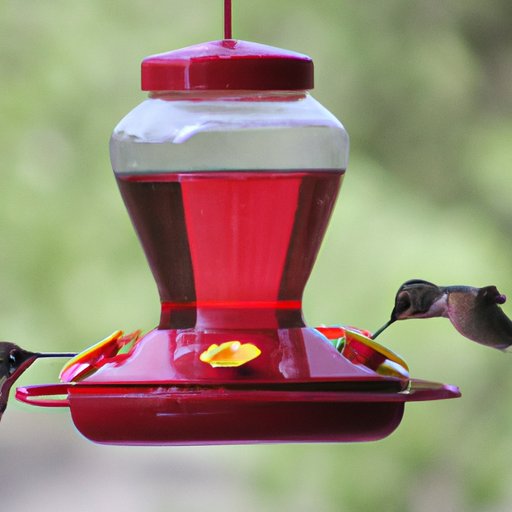Introduction
Hummingbirds are amongst the most endearing creatures in the world. Their iridescent feathers and high-speed flying abilities make them quite the spectacle to watch. It is no wonder many people want to attract them to their yard. One of the best ways to do this is by setting up a hummingbird feeder filled with sugar water. This guide will help you make the best sugar water for your hummingbirds, attract more birds to your garden, and keep them coming back for more.
A Simple Guide to Making Sugar Water for Hummingbirds
When making sugar water for your hummingbirds, remember the basic recipe: four parts water to one part sugar. You can adjust this ratio for larger or smaller quantities, but always keep in mind that the sugar should be diluted by more water than sugar. Moreover, it is best to use granulated white sugar as opposed to honey, brown sugar, or artificial sweeteners, as these can be harmful to hummingbirds and can ferment in the heat. You can also use raw cane sugar, but it may not dissolve as quickly.
When selecting a hummingbird feeder, choose one that is easy to clean and has several feeding ports. Clean the feeder with hot water and mild soap every time you refill it to avoid contamination by mold or bacteria.
The Dos and Don’ts of Hummingbird Food: How to Make Sugar Water the Right Way
It is critical to keep hummingbird food fresh to avoid fermentation, mold, and bacteria growth. The sugar water in your feeder should be replaced every 2-3 days and more frequently in hotter weather. Avoid any food coloring, red dye, or other additives, as these can be harmful to hummingbirds. Instead, make sure the feeder is clean and has fresh nectar readily available.
Ensure that the hummingbirds do not see reflections of trees, sky, or their own reflection in windows, as they may injure themselves by flying into them.
Homemade Hummingbird Nectar: Everything You Need to Know to Attract These Beautiful Birds
Hummingbirds are known to be attracted to specific plants such as trumpet-shaped flowers, columbines, and bee balms. The colors that attract them the most are red, orange, pink, and purple. Alternatively, you can plant suitable trees and shrubs around your feeder to give the birds cover and make them feel at home. The best time to refill your hummingbird feeder is in the morning as hummingbirds are most active during the day. Installing a cat proof fence will protect hummingbirds from predators such as cats.
Sweetening the Deal: Creating a Safe Zone for Hummingbirds with Homemade Nectar
Hummingbird feeders play a crucial role in facilitating safe migratory channels for hummingbirds. To ensure that their journey is not disrupted or endangered, it is essential to take steps to create a safe zone for hummingbirds. Avoid placing your hummingbird feeder in direct sunlight where nectar can quickly spoil and mold can grow. Hanging the feeder in a shaded area is the best option. To make the birds feel safe, avoid placing feeders in areas where there is a lot of activity or noise.
A Step-by-Step Guide to Making Hummingbird Food That Will Keep Your Feathered Friends Coming Back for More
To make the perfect hummingbird nectar, bring the water to a rolling boil, then add your sugar and stir until it is fully dissolved. Allow it to cool before filling your hummingbird feeder. Always make extra and store in sterilized glass jars in the refrigerator. Below is a step-by-step guide to making and filling your hummingbird feeder:
- Boil four cups of water in a clean pot.
- Add one cup of sugar and stir to dissolve completely.
- Allow the mixture to cool to room temperature, then pour it into your feeder.
- Hang the feeder in a shaded, safe place away from windows and sun.
- Clean the feeder every 2-3 days and refill with fresh sugar water.
Conclusion
Making sugar water for hummingbirds is a rewarding and straightforward process that can bring the beauty of hummingbirds to your garden. By following these tips and best practices, you can ensure your hummingbirds get the best quality nectar and that they are safe and happy in your backyard. Don’t forget to share your experience and ask questions in the comment section.
